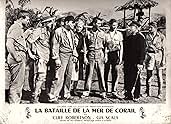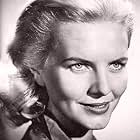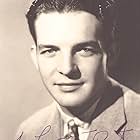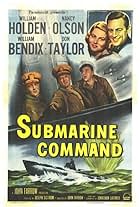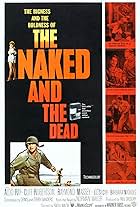In 1942 submarine commander Jeff Conway secretly photographs Japanese aircraft carriers in the Coral Sea but his submarine is damaged and he's forced to surrender.In 1942 submarine commander Jeff Conway secretly photographs Japanese aircraft carriers in the Coral Sea but his submarine is damaged and he's forced to surrender.In 1942 submarine commander Jeff Conway secretly photographs Japanese aircraft carriers in the Coral Sea but his submarine is damaged and he's forced to surrender.
Phil Adams
- Crewman
- (uncredited)
Tom Anthony
- Helmsman
- (uncredited)
Barry Cahill
- Bomber Pilot
- (uncredited)
James T. Callahan
- Australian Prisoner
- (uncredited)
James Forrest
- Australian Prisoner
- (uncredited)
James T. Goto
- Capt. Yamazaki
- (uncredited)
Dale Ishimoto
- Japanese Guard
- (uncredited)
Storyline
Did you know
- TriviaFilm debut of George Takei.
- GoofsThe three Japanese carriers are identified as of the "Shoho Class." In fact, there were only two Shoho Class carriers and at the Battle of the Coral Sea only Shoho was present. The other two carriers were the much larger Zuikaku and Shokaku. The narrator says that all three Japanese carriers were "sunk or damaged;" however, that is not actually true. Only the Shoho was sunk and the Shokaku was damaged, which kept her out of the Battle of Midway a month later. The Zuikaku was not damaged, but her airplane and aircrew losses were such that she also missed the Battle of Midway.
- Quotes
Lt. Cmdr. Jeff Conway: In my book, anybody who cooperates with my enemies isn't neutral.
- Crazy creditsOpening credits prologue: "One of the greatest and most significant battles in the history of naval warfare occurred in May 1942.
The place: Coral Sea, South Pacific.
The participants: the Japanese Fifth Carrier Division and the United States Pacific Fleet.
The issue at stake was simple and clearcut. The enemy was moving rapidly towards Australia and had to be stopped. He was stopped.
The Allied victory in the South Pacific will stand in world history as a noble monument to the memory of the gallant men and officers of the United States Navy who fought and won the battle of the Coral Sea."
Signed: Rear Admiral John J. Bergen, U S N R President Navy League of the United States
- ConnectionsEdited into WW II Theater: Battle of the Coral Sea (2022)
Featured review
A moustached Cliff Robertson as a submarine commander looks incredibly dashing in this trial run for his return to the Pacific a few years later as the young JFK in charge of PT-109.
Atmospheric black & white photography by veteran Technicolor cameraman Wilfrid Cline competes with an emphatic score by Ernest Gold (who shortly afterwards collected an Oscar for his work on 'Exodus').
Post 'River Kwai' the Japanese commander played by Teru Shimada is allowed to be slightly more human than he would fifteen years earlier; while the two ill-fated European leading ladies are not quite as incongruous as you anticipate when you first see their names in the credits.
Atmospheric black & white photography by veteran Technicolor cameraman Wilfrid Cline competes with an emphatic score by Ernest Gold (who shortly afterwards collected an Oscar for his work on 'Exodus').
Post 'River Kwai' the Japanese commander played by Teru Shimada is allowed to be slightly more human than he would fifteen years earlier; while the two ill-fated European leading ladies are not quite as incongruous as you anticipate when you first see their names in the credits.
- richardchatten
- Oct 11, 2020
- Permalink
- How long is Battle of the Coral Sea?Powered by Alexa
Details
- Release date
- Country of origin
- Languages
- Also known as
- Schlacht im Korallenmeer
- Filming locations
- San Fernando Valley, Los Angeles, California, USA(battle scenes)
- Production companies
- See more company credits at IMDbPro
- Runtime1 hour 26 minutes
- Color
- Aspect ratio
- 1.85 : 1
Contribute to this page
Suggest an edit or add missing content

Top Gap
By what name was Battle of the Coral Sea (1959) officially released in India in English?
Answer







